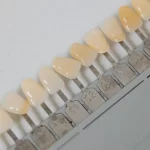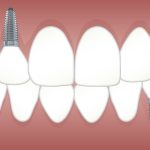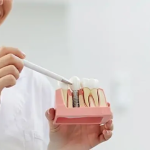Dental problems can often become so bad that it can culminate in tooth extraction and create the unsightly void in your mouth that can cause enough embarrassment. Moreover, missing teeth is also bad for health because it reduces your ability to chew food that is so essential for proper digestion. Replacing missing tooth is now easy with various restoration techniques available to the dentists of Baldwin Dental clinic who are familiar with restorative dentistry that consists of integrated management of oral health problems and restoring the functional and aesthetic state of the mouth.
Although the American Dental Association recognizes Restorative Dentistry as a specialty, general dentists without special education and certification can perform many of these procedures. It all depends on the difficulty level of the procedure and the comfort level of the dentist in applying the technique. Many of the procedures of Restorative Dentistry like veneers, crowns, fillings, bridges and dental implants and dentures are part of prosthodontic dentistry, another specialty of dental treatment.
Options for tooth restoration
Besides implants, there are many more tooth restoration options.
- Filling – Poor oral hygiene, acidic and high sugar diet, bacteria, and an individual’s vulnerability to tooth decay are the causes of dental cavities which dentists call caries. Tooth decay left untreated can turn dangerous as it can run deep into the gums and bones, causing structural problems and would require more complex procedures to set things right. Dentists can do composite resin fillings for cavities that take just a single visit to complete the procedure. However, it would require two sittings to apply ceramic and porcelain fillings, which are more durable.
- Crowns – To restore any badly damaged tooth dentists would use a crown as an envelope that completely covers the unstable tooth. One type of crown made of porcelain with metal substructure is quite common while another variety of all-porcelain is also available. The crown restores the natural look and function of the tooth. The dentist would recommend the most suited material of crown that can last for many years.
- Implants – When it is not possible to save a severely damaged tooth, an extraction is the only option, dentists would recommend a dental implant as a substitute for the missing tooth. The implant consists of the entire tooth structure together with the root. The dentist uses a titanium fixture to place it into the jawbone surgically that acts as the root of the tooth. In the next step, the dentist fixes the replacement tooth to the root after the titanium fixture fuses with the jawbone completely and the fixture together with the root becomes a composite unit. Dental implants do not affect the adjacent teeth and contribute to preventing jawbone erosion as well as impaired chewing that can lead to poor nutrition.
- Bridges – When replacement of multiple teeth becomes necessary, the dentist will use a composite unit of several teeth to cover the gap created by teeth removal so that it acts as a bridge and fills the gap. It means that the dentist uses more than one crown to create the implant that restores your smile and facilitates proper chewing.
- Teeth whitening – People make use of teeth whitening to restore the color and shine of teeth, which can become dull and yellow due to aging or poor oral hygiene. Dentists use a bleaching solution which, when applied on teeth, brings back the shiny white brilliance. The procedure is more for cosmetic improvement that improves the looks.
Types of dental implants
Dental implants are available in different sizes and types and always tailor-made for patients to ensure their perfect fitting that ensures comfort and good health. Endosteal and Subperiosteal are the two types of dental implants that you will come across.
Endosteal implants – Implants that are placed in the jawbone are endosteal implants that come in the shape of titanium screws and is the most commonly used dental implant.
Subperiosteal implants – These dental implants replace on the gum, above or on the jawbone. This type of implant suits patients who do not have a healthy jawbone and are unwilling to undergo a surgical procedure of bone augmentation for rebuilding the jawbone.
The condition of the jawbone determines how well it can support the implants. In case of weak or failing jawbones, dentists would recommend rebuilding it for restoring the natural jawline and provide a strong foundation for supporting dental implants.
Techniques for building jawbone
Bone augmentation, sinus lift, and ridge expansion are the three techniques that dentists use for building jawbone.
Bone augmentation – When the jawbone is unable to support dental implants, it would require strengthening the jawbone by building it again. Dentists use bone additives and growth factors for the fortification of bones as it gives the best results. Bone grafting is another procedure that replaces missing bones for repairing complex bone fractures that pose health risks to patients. It consists of taking a section of bone from another area of the body and placing it into the jawbone. Nowadays, using a special bone grafting material instead of a bone piece has become the norm. The recovery time is several months as the graft creates new strong bones that can support dental implants.
Sinus lift – Sometimes the bone below the sinus deteriorates if the upper back teeth go missing. In such cases, dentists would add bone below the sinus and by the process of sinus elevation or sinus augmentation or sinus lift.
Ridge expansion – The technique involves widening the jawbone to enable it to support dental implants. Dentists add bone graft material to a small space or ridge created along the top of your jaw. When the jawbone is wide enough, it can easily support dental implants.
Technology has helped to improve the dental implant procedures to make it more reliable and highly predictable. Dentists use highly precise 3D imaging and use implant surgical planning software to refine the surgical techniques and make it more accurate and effective. It helps them to analyze the jaw anatomy and identify the best sites of implant placement before starting the surgery.







